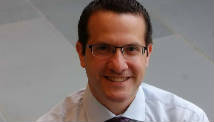Updated at 5:48 p.m. ET
TAFT, Calif. A 16-year-old student armed with a shotgun walked into class in a rural California high school on Thursday and shot one student, fired at another but missed, and then was talked into surrendering by a teacher and another staff member, officials said.
The teen victim was in critical but stable condition, Kern County Sheriff Donny Youngblood told a press conference. The sheriff said the teacher suffered a minor pellet wound to the head but declined treatment.
The gunman had as many as 20 rounds of ammunition in his pocket, the sheriff said.
When the shots were fired, the teacher tried to get the more than two dozen students out a back door and also engaged the shooter in conversation to distract him, Youngblood said. A campus supervisor responding to a call of shots fired also began talking to the gunman.
"They talked him into putting that shotgun down. He in fact told the teacher, `I don't want to shoot you,' and named the person that he wanted to shoot," Youngblood said.
"The heroics of these two people goes without saying. ... They could have just as easily ... tried to get out of the classroom and left students and they didn't," the sheriff said. "They knew not to let him leave the classroom with that shotgun."
The shooter didn't show up for first period then interrupted the class of 28 students.
Investigators had not yet had a chance to interview the student and so had no immediate word on a motive or whether the attacker had a previous disciplinary record. Nor did they know where he got the shotgun.
The wounded student was flown to a hospital in Bakersfield. Officials said a female student was hospitalized with possible hearing damage because the shotgun was fired close to her ear, and another girl received minor injuries during the scramble to flee when she fell over a table.
Officials said there's usually an armed officer on campus but the person wasn't there because he was snowed in. Taft police officers arrived within 60 seconds of first reports.
The shooting happened on the second floor of the school's science building around 9 a.m., according to CBS affiliate KBAK in Bakersfield.
As word spread, Dayna Hopper rushed to the school to pick up her son Joseph Sorensen, 16, and daughter, Cheryle Pryor, 15, who had called from Cheryle's cellphone.
"I panicked. I wanted to puke and just get here," Dayna Hopper told The Bakersfield Californian.
KERO-TV Bakersfield reported that the station received phone calls from people inside the school who hid in closets.
The bell had just rung at a nearby school when teachers began shouting for students to get inside buildings, and the principal used an intercom to tell students to stay inside, Felicity Reich, 13, a student at Lincoln Junior High School, told the newspaper.
Shaken, she held the hand of her mother, Ellie Reich, as she spoke.
About 900 students are enrolled at the high school, which includes 9th through 12th grades. Authorities went room by room through the school and expected to spend the day checking backpacks to make sure no other weapons were on campus.
Masses of parents headed to the school football field to find their children, and officials at other schools took action to protect their students as well, the newspaper said.
Wilhelmina Reum, whose daughter Alexis Singleton is a fourth-grader at a nearby elementary school, got word of the attack while she was about 35 miles away in Bakersfield and immediately sped back to Taft.
"I just kept thinking this can't be happening in my little town," she told The Associated Press.
"I was afraid I was going to get hurt," Alexis said. "I just wanted my mom to get here so I could go home."
The Taft shooting came less than a month after a gunman massacred 20 children and six women at Sandy Hook Elementary School in Newtown, Conn., then killed himself.
That shooting prompted President Barack Obama to promise new efforts to curb gun violence. Vice President Joe Biden, who was placed in charge of the initiative, said he would deliver new policy proposals to the president by next week.
At the state Capitol, Assembly Speaker John Perez, D-Los Angeles, said the thoughts and prayers of legislators were with the people at the Taft school.
"It really is just another very sad moment as we deal with the ongoing reality of gun violence that has captured so much of our attention this last year," Perez said.















